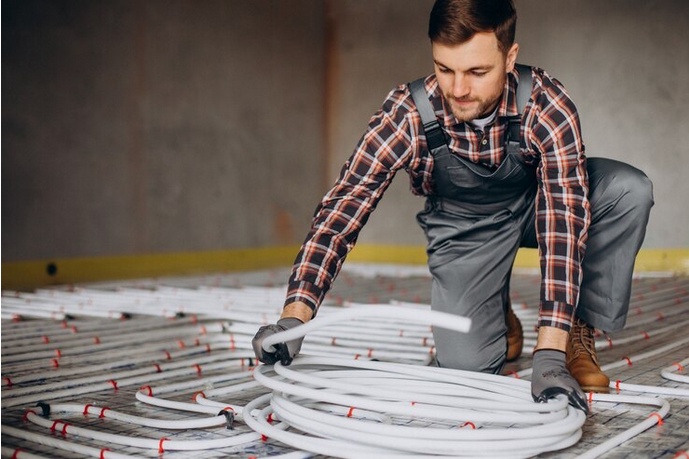Introduction:
In the realm of energy efficiency, thermal pipe insulation stands out as a crucial element in the quest for heat control. This guide explores the comprehensive benefits of thermal pipe insulation, delving into its role in energy conservation, cost savings, environmental impact, and overall safety. By mastering heat control through effective insulation, individuals and businesses can unlock a range of advantages that extend beyond mere temperature regulation.
1. Energy Conservation: The Core Principle
At its essence, thermal pipe insulation revolves around the fundamental concept of energy conservation. Pipes transporting hot fluids, whether in residential, commercial, or industrial settings, are prone to heat loss. Thermal insulation acts as a barrier, preventing this dissipation and ensuring that the transported fluids maintain their intended temperature. By curbing heat loss, thermal pipe insulation significantly contributes to energy conservation, ultimately reducing overall energy consumption.
2. Financial Gains: A Wise Investment
The financial implications of thermal pipe insulation are noteworthy. While the initial installation may incur costs, the long-term savings in energy bills make it a wise investment. Businesses and homeowners can experience a substantial reduction in heating costs, making thermal insulation a cost-effective solution. Over time, the return on investment becomes apparent, contributing to improved financial sustainability for individuals and organizations alike.
3. Environmental Responsibility: Reducing Carbon Footprints
The adoption of thermal pipe insulation aligns with environmental sustainability goals. By lowering energy consumption, insulation helps cut down on greenhouse gas emissions. This reduction in carbon footprints is increasingly vital in the global effort to combat climate change. As societies worldwide place greater emphasis on environmentally responsible practices, thermal pipe insulation emerges as a tangible and effective way to contribute to a greener future.
4. Equipment Longevity: A Silent Advantage
Beyond energy conservation, thermal pipe insulation plays a crucial role in extending the lifespan of equipment. By minimizing temperature fluctuations, insulation safeguards pipes, valves, and other components from wear and tear. This extended equipment longevity translates into fewer maintenance requirements and replacements, ultimately reducing operational costs for businesses and ensuring durability for residential systems.
5. Condensation Control: Mitigating Risks
Condensation on pipes poses a range of risks, including corrosion and structural damage. Thermal insulation serves as a protective shield against condensation, preserving the integrity of the pipes and preventing potential harm. This aspect is particularly critical in industrial environments where corrosive substances may be present. By effectively controlling condensation, thermal pipe insulation contributes to the reliability and safety of the entire piping system.
6. Safety Enhancement: Guarding Against Burns
Safety is paramount, and thermal pipe insulation adds an extra layer of protection. Uninsulated pipes carrying hot substances pose a burn risk, especially in residential settings with children. Thermal insulation acts as a safety barrier, reducing the surface temperature of pipes and minimizing the potential for burns. This feature is integral for both residential and commercial spaces, prioritizing the well-being of occupants and promoting a secure environment.
7. Versatility in Applications: Tailoring Solutions
One of the strengths of thermal pipe insulation lies in its adaptability to diverse settings and industries. Whether in residential plumbing, industrial facilities, or commercial spaces, insulation materials can be customized to suit specific requirements. This versatility makes thermal pipe insulation a scalable solution that can be implemented across a wide range of applications, offering tailored heat control solutions for various user groups.
8. Ease of Installation: Minimizing Disruptions
The installation process of thermal pipe insulation is straightforward, causing minimal disruptions to daily activities. Whether retrofitting existing systems or incorporating insulation into new constructions, the application is efficient and can be completed with minimal downtime. This ease of installation makes thermal pipe insulation an accessible solution for a diverse audience, encouraging widespread adoption and making it a practical choice for those seeking effective heat control measures.
Conclusion:
In conclusion, the mastery of heat control achieved through thermal pipe insulation goes beyond mere temperature regulation. The guide has explored the multifaceted benefits, including energy conservation, financial gains, environmental responsibility, equipment longevity, condensation control, safety enhancement, versatility in applications, and ease of installation. As individuals and businesses navigate the landscape of energy efficiency, thermal pipe insulation emerges as a pivotal tool in fostering a sustainable, cost-effective, and safe approach to heat management.


No comments yet